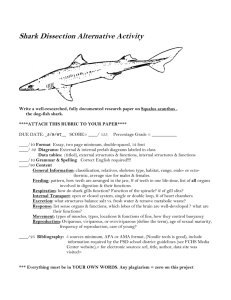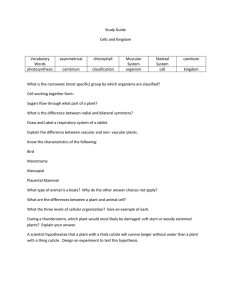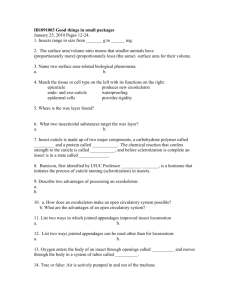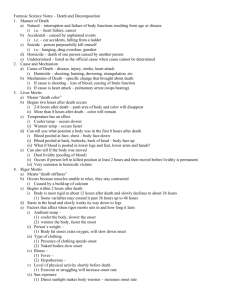10.302 Fall 2004 Homework Problem Set 9 at start of class
advertisement
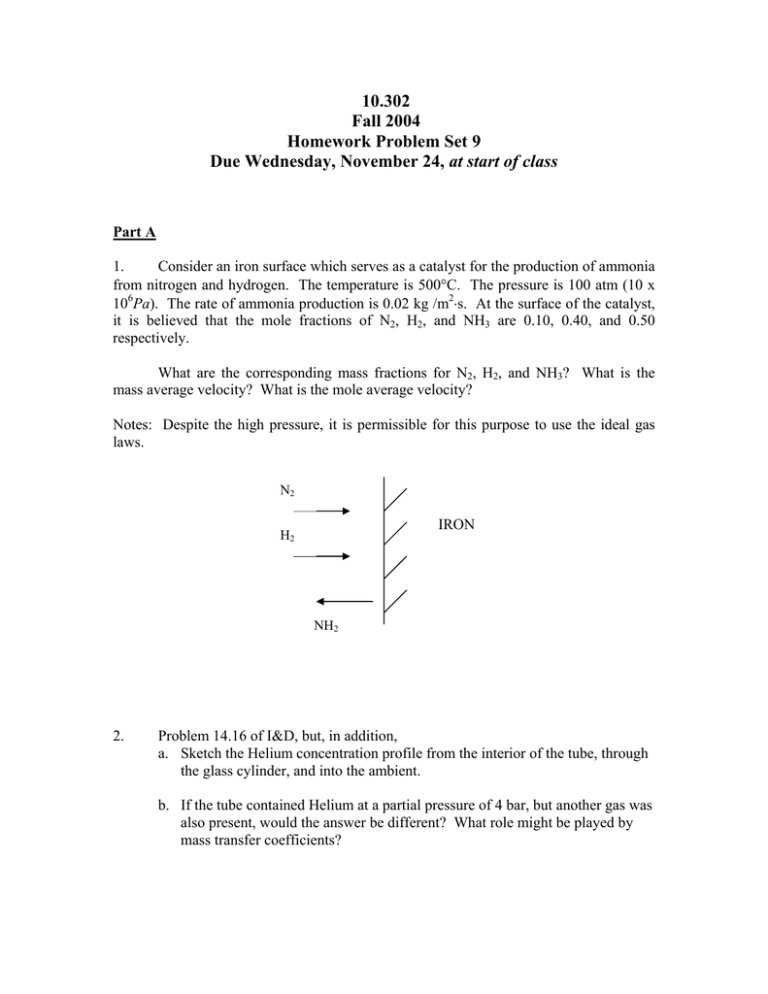
10.302 Fall 2004 Homework Problem Set 9 Due Wednesday, November 24, at start of class Part A 1. Consider an iron surface which serves as a catalyst for the production of ammonia from nitrogen and hydrogen. The temperature is 500°C. The pressure is 100 atm (10 x 106Pa). The rate of ammonia production is 0.02 kg /m2⋅s. At the surface of the catalyst, it is believed that the mole fractions of N2, H2, and NH3 are 0.10, 0.40, and 0.50 respectively. What are the corresponding mass fractions for N2, H2, and NH3? What is the mass average velocity? What is the mole average velocity? Notes: Despite the high pressure, it is permissible for this purpose to use the ideal gas laws. N2 IRON H2 NH2 2. Problem 14.16 of I&D, but, in addition, a. Sketch the Helium concentration profile from the interior of the tube, through the glass cylinder, and into the ambient. b. If the tube contained Helium at a partial pressure of 4 bar, but another gas was also present, would the answer be different? What role might be played by mass transfer coefficients? 3. A test tube contains methanol at 50°C, at which condition methanol has a vapor pressure of 400mm Hg. Air, also at 50°C, is gently blown across the top of the test tube. Initially, the liquid level is 2cm below the top of the tube. Use a quasi-steady analysis to estimate the time required for the liquid level to drop by 2cm. Please show whether or not the quasi-steady assumption is valid. Data: • For air/methanol the diffusivity is 0.2 cm2/s. • For liquid methanol, the density is 0.8 gm/cm3. Part B (a) I&D 14.22 (b) If the density of carbon is 2000 kg/m3, how long would you estimate would be required for complete combustion of the particle? For this purpose, you may assume that the concentration profile around the particle is quasi-steady. Can you show that this assumption is valid? Part C Many insects breathe through structures called spiracles, which are essentially open tubes extending keep into the insect’s body as shown below. Oxygen diffuses into these tubes from the surrounding air and gas exchange occurs along the walls. It can be assumed that about one mole of carbon dioxide diffuses into the spiracle gas phase for every mole of oxygen that diffuses out of the spiracle into the tissue. To prevent excessive water loss, the walls of the spiracles are coated with a cuticle which serves as a diffusion barrier for gases. The thickness of this cuticle is 10 microns, except at the end (x = L), where it is thicker and the flux of oxygen is zero out the end of the tube. Outside the cuticle, in the tissue, the concentration of oxygen is essentially constant and is approximately 5% of the concentration which would be in equilibrium with air. Comparative entomologists (scientists who study insects and compare their features) are interested in understanding how the ability of various insects to exchange gases with the environment limits the size or activity level of the insects. For example, it has been proposed that larger insects are found in the tropics than in the artic regions because diffusion is faster in warm equatorial climates. You want to show the entomologists how to quantitatively assess their hypotheses by providing a mathematical model of insect respiration. (a) What is the local flux of oxygen from the spiracle to the tissue at any point along the wall in terms of the gas phase concentration driving force and other relevant parameters? Note that the cuticle is thin relative to the radius of the spiracle. (b) Use your answer from (a) to derive a differential equation for the oxygen concentration within the spiracle, ca, as a function of x. Validate the assumption that radial concentration gradients are negligible in the gas phase. (c) Does the oxygen concentration in the spiracle ever drop to less than 20% of ambient for the case of an insect in the tropics (data shown below)? You do not need to show all the steps in the solution of your equation in (b) if you cite a relevant solution in your notes or text.) (d) Is the spiracle an efficient way to exchange gases? The efficiency of the spiracle an be judged by comparing the amount of oxygen which is transferred within the spiracle to the amount which would be transferred if the ambient oxygen concentration prevailed in the gas phase all along the length of the spiracle. Data (all at 35°C, the temperature of the tropics): Spiracle radius, r = 0.01 cm Do-cuticle = 2 x 10-5 cm2/s Spiracle length, L = 0.8 cm Do-air = 0.2 cm2/s Cuticle thickness, t = 0.001 cm oxygen concentration in tissue, ct = 0.01 mmol/L Oxygen solubility in cuticle or tissues oxygen concentration in air, ca = 8 mmol/L Relative to air, cc or ct = 0.025 ca spiracles carbon dioxide Insect body L air tissue cuticle oxygen ca x Cross section along length of spiracle carbon dioxide Close-up exchange of gas Part D Consider a small, spherical, airborne cellular organism which consumes oxygen in accordance with a zero-order homogeneous reaction rate model. The temperature is 25°C. Except possibly for diffusion-induced effects, the contents of the cell and the surrounding air are both stationary. a. Assume for the moment that the reaction rate is very slow. Does the resistance to oxygen transport lie predominantly in the air phase or within the organism? Are the two resistances comparable? b. If the O2 consumption rate, - N O 2 , is 1gmole/m3⋅s and if the diameter of the organism is 0.02 cm, what is the steady state concentration of O2 at the center of the cell? The concentration of O2 in the cell is everywhere very low, so the “dilute” forms of the mass transfer equations are appropriate. c. Is there a cell size such that the steady state concentration of O2 at the center would be zero? If so, please give this size. • DATA D O 2GAS = 0.20cm 2 / s D O 2 LIQ = 1x10 −5 cm 2 / s SCELL/AIR = 0.5 ∇ 2f = 1 ∂ ⎛ 2 ∂f ⎞ 1 ∂ ⎛ ∂f ⎞ ⎟ ⎜ r sin + φ ⎟ ⎜ ∂φ ⎟⎠ r 2 ∂r ⎝ ∂r ⎠ r sin φ ∂φ ⎜⎝ 1 ∂ 2f 2 + 2 sin φ 2 r ∂θ (in spherical coordinates)
